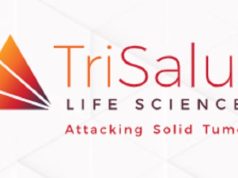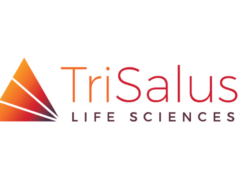 This advertorial is sponsored by TriSalus Life Sciences.
This advertorial is sponsored by TriSalus Life Sciences.
NOTE: This article is intended only for healthcare professionals in the USA.
The Medicare Transitional Pass-Through Payment (TPT) programme is designed to foster innovation and increase access to cutting-edge treatments that benefit patients. The Centers for Medicare and Medicaid Services (CMS) believes the programme is important for hospitals to receive TPT payment for products that offer substantial clinical improvement. One goal of the programme is to target TPT payments for those devices where cost considerations might be most likely to interfere with Medicare patient access.
Patient access is at the heart of the TPT programme. CMS understands that relentless innovation is a crucial driver in creating value across all industries. Seema Verna, CMS administrator, remarks: “Innovation is the fuel that powers the engine of progress and creativity. […] We are committed to removing government barriers and modernising regulations around new technologies to ensure safe and effective treatments are readily accessible to beneficiaries without delaying patient care.”1
To facilitate beneficiary access to innovative medical devices, drugs, and biologicals, Congress established the TPT payment programme to prevent inadequate payment when used in an appropriate outpatient setting. CMS provides the TPT payment so as not to prevent use of new technologies due to cost concerns. The programme allows Medicare to collect data, and impacts CMS’ ability to establish appropriate permanent rates that are not described by existing categories. By addressing financial risk for outpatient facilities and mitigating the financial deterrent to innovative product utilisation, Medicare patients are more likely to gain access to new products through this programme.2
Historically, very few devices have qualified for TPT. In the last four years, only six device applications (out of 26) have been approved for the TPT programme. While TPT status has been in place for 20 years, only a very limited number of products have been approved because the programme requirements are so narrow. CMS reviews eligible device applications based on a demonstration of the following criteria:
- Recent US Food and Drug Administration (FDA) approval/clearance (generally within three years)
- Not appropriately described by another existing category or one previously established for TPT
- Substantial clinical improvement over currently available treatments
TriNav™ Infusion System—one of five device TPT approvals granted this year
The TriNav Infusion System, which CMS approved TPT status for in November 2019, is the only TPT-approved device specifically designed for interventional radiology (IR) procedures. TriNav is designed to help overcome the infusion barriers that limit therapeutic uptake. In the Medicare hospital outpatient prospective payment system (OPPS) and ambulatory surgical center (ASC) payment system 2020 final rule, CMS stated that TriNav meets the criteria for device pass-through payment including newness, cost, and substantial clinical improvement. For those devices granted TPT status effective 1 January 2020, pass-through payments will mostly likely remain available until 31 December 2022.
A novel drug-delivery mechanism
Fundamental to TriNav is the Pressure-Enabled Drug Delivery™ (PEDD™) approach with SmartValve™ technology. To overcome pressure barriers that limit flow, PEDD with SmartValve creates a high-pressure gradient that improves delivery and penetration of therapeutic agents.3–7 The porous expandable SmartValve is a first-of-kind proprietary technology shown to modulate pressure and flow for optimal therapy delivery and deeper penetration into the vasculature while protecting heathy tissue.3, 5, 7
New HCPCS code information
Medicare’s transitional pass-through payment programme is designed to benefit patients who receive treatment with certain products in hospital outpatient departments (HOPDs) and ASCs. Medicare makes the additional TPT payment for devices where cost considerations might be most likely to interfere with patient access. It allows for CMS to collect necessary data and assign appropriate permanent codes and rates, paving the way for routine Medicare reimbursement later.
CMS assigned the TriNav Infusion System to the Health Care Common Procedure Coding System (HCPCS) code C1982 (catheter, pressure-generating, one-way valve, intermittently occlusive). When the device is used, CMS has stated it should always be billed with 37243 (vascular embolization or occlusion, inclusive of all radiological supervision and interpretation, intraprocedural roadmapping, and imaging guidance necessary to complete the intervention; for tumours, organ ischaemia, or infarction).
While most payers usually follow suit with Medicare B coverage policy, the reimbursement methodologies and amounts may vary. Facilities are encouraged to contact payers prior to using a product on TPT status to confirm coverage and reimbursement policies. For more information on TriNav, visit www.trinavinfusion.com, or call +1-888-321-5212.
None of the above statements are intended to imply a CMS endorsement of TriNav or any other product. The coding information provided is gathered from various resources, is general in nature, and is subject to change without notice. The provider is responsible for determining the appropriate health care setting and submitting accurate claims for products and services rendered. Providers should contact third-party payers for specific information on their coding, coverage, and payment policies. The TriNav Infusion System is available for sale in the USA. This product has not been approved for sale outside the USA. Contraindications: TriNav™ is not intended for use in the vasculature of the central nervous system (including the neurovasculature) or central circulatory system (including the coronary vasculature). Intended Use: The TriNav™ Infusion System is intended for use in angiographic procedures. It delivers radiopaque media and therapeutic agents to selected sites in the peripheral vascular system.9
References
1. Remarks of Centers for Medicare & Medicaid Services (CMS) Administrator Seema Verma to the Medical Device Manufacturers Association (MDMA) Annual Meeting (5/2/2019).
2. Gustafson, TA. ASC Focus. 2015 Sept:8-9.
3. Titano JJ, et al. Cardiovasc Intervent Radiol. 2019;42:560-568. * Study design: A retrospective, single-centre study included 88 treatment-naive patients with solitary HCC tumours <6.5cm who underwent treatment utilising either PEDD™ (n=18) or standard EH microcatheters (n=70). Twenty-three patients (five PEDD™, 18 EH) received a liver transplant during the study, with one PEDD™ and six EH patients excluded from the tumour necrosis analysis for receiving subsequent therapies prior to transplant. A pathologist performed a blinded review of the liver explant specimens to assess tumour necrosis and treatment distribution. Percentage necrosis was defined as the volume of necrotic areas divided by the total tumour volume.
4. Pasciak AS, et al. J Vasc Interv Radiol. 2015;26:660-669. *Study design: Sequential lobar infusion of 99mTc MAA in nine patients prior to 90Y treatment with PEDD™ and conventional microcatheter.
5. Durham ED, et al. J Vasc Interv Radiol. 2015;26:e54 (Poster 18).
6. Kim AY, et al. PloS One. 2017;12(9):e0183861. DOI: 10.1371/
journal.pone.0183861.
7. O’Hara R. Poster presented at: European Conference on Interventional Oncology (ECIO); April 22-25, 2018; Vienna, Austria.
8. Data on file (510K). TriSalus Life Sciences, 2019.
9. TriSalus TriNav™ Infusion System, Instructions for Use. None










